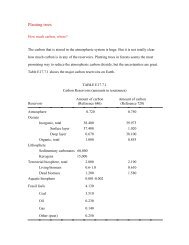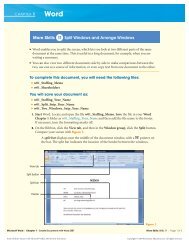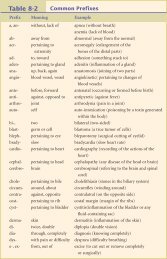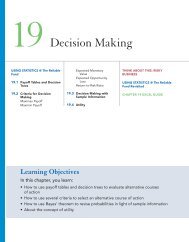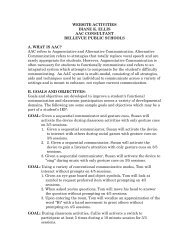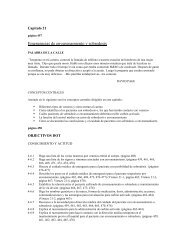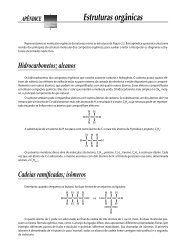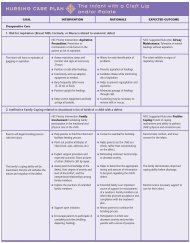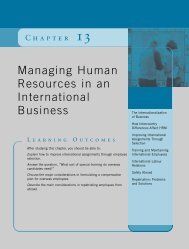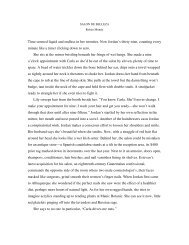chapter
chapter
chapter
Create successful ePaper yourself
Turn your PDF publications into a flip-book with our unique Google optimized e-Paper software.
sections of the East Pacific Rise. Although these rates of<br />
lithospheric production are slow on a human time scale,<br />
they are nevertheless rapid enough so that all of Earth’s<br />
ocean basins could have been generated within the last<br />
200 million years. In fact, none of the ocean floor that has<br />
been dated exceeds 180 million years in age.<br />
During seafloor spreading, the magma that is injected<br />
into newly developed fractures forms dikes that tend<br />
to cool from their outer borders inward toward their centers.<br />
Because the warm interiors of these newly formed<br />
dikes are weak, continued spreading produces new fractures<br />
that split these young rocks roughly in half. As a result,<br />
new material is added about equally to the two<br />
diverging plates. Consequently, new ocean floor grows<br />
symmetrically on each side of a centrally located ridge<br />
A.<br />
B.<br />
C.<br />
D.<br />
Continental crust<br />
Rift<br />
valley<br />
Upwarping<br />
Linear sea<br />
Oceanic ridge<br />
Chapter 7 Plate Tectonics 203<br />
crest. Indeed, the ridge systems of the Atlantic and Indian<br />
oceans are located near the middle of these water bodies<br />
and as a consequence are called mid-ocean ridges.<br />
However, the East Pacific Rise is situated far from the<br />
center of the Pacific Ocean. Despite uniform spreading<br />
along the East Pacific Rise, much of the Pacific Basin that<br />
once lay east of this spreading center has been overridden<br />
by the westward migration of the American plates.<br />
Spreading Rates<br />
and Ridge Topography<br />
When various segments of the oceanic ridge system<br />
were studied in detail, some topographic differences<br />
came to light. Most of these differences appear to be<br />
Rift<br />
Oceanic crust<br />
Continental<br />
crust<br />
Figure 7.10 A. Rising magma forces the crust upward, causing numerous cracks in the rigid lithosphere. B. As the crust is<br />
pulled apart, large slabs of rock sink, generating a rift zone. C. Further spreading generates a narrow sea. D. Eventually, an<br />
expansive ocean basin and ridge system are created.




